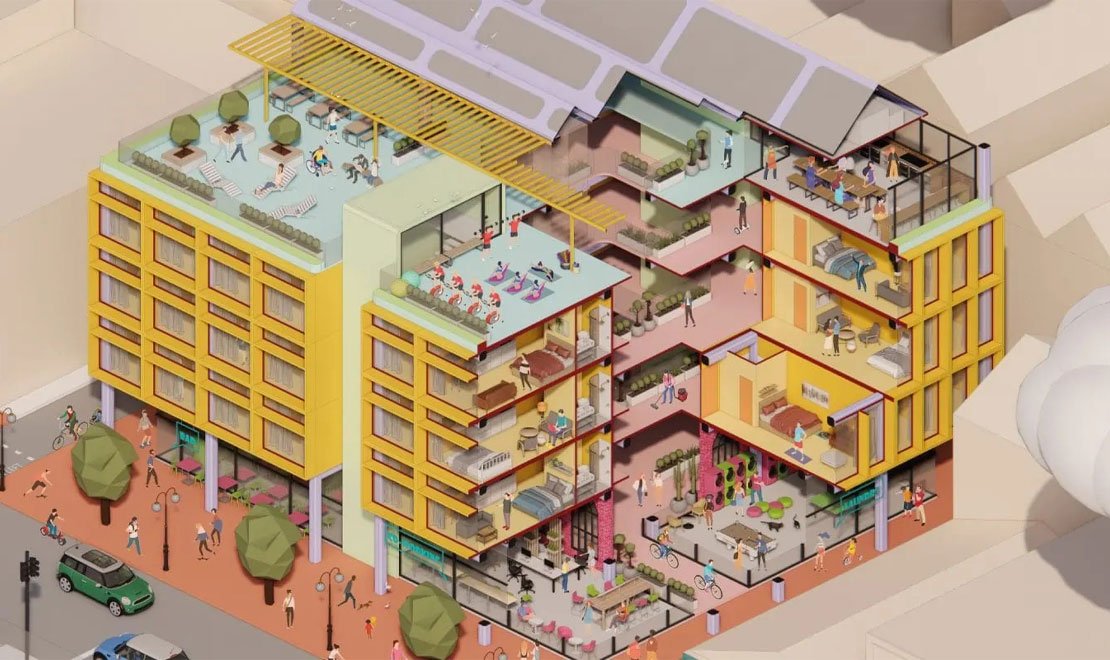
In recent years, the housing market has witnessed a profound transformation, especially among urban professionals, digital nomads, and millennials. Co-living apartments have emerged as one of the most dynamic solutions to modern living challenges—offering affordability, community, and convenience in one package. These shared spaces are not just about splitting rent; they represent a lifestyle shift towards collaboration, connection, and meaningful living.
As cities become denser and real estate prices soar, co-living offers an alternative to traditional rentals and ownership. It provides flexible leases, fully furnished spaces, and shared amenities that foster interaction and belonging—qualities often missing in conventional apartments.
Co-living apartments are residential spaces designed for multiple individuals to live together while sharing common amenities like kitchens, lounges, gyms, or co-working areas. Unlike traditional shared housing, these spaces are professionally managed and curated for a seamless living experience.
Each resident typically enjoys a private bedroom or studio while sharing communal facilities with others. The focus lies on building community through shared spaces and organized events. It’s an appealing solution for young professionals, entrepreneurs, and expats looking to blend work and life in an engaging environment.
Several factors have fueled the rise of co-living apartments.

Community amenities are the heart of the co-living experience. They transform ordinary apartments into vibrant, interactive spaces. These shared facilities are designed to promote engagement, collaboration, and wellness among residents.
Common community amenities include:
These amenities encourage organic interactions, helping residents build friendships and professional networks that often extend beyond the apartment complex.
At its core, co-living is about community. In a time when social isolation has become a growing concern, co-living offers a built-in support network. The design of these apartments encourages communication—shared kitchens become social hubs, and common lounges transform into brainstorming spaces for creative minds.
Operators often organize regular community events, such as movie nights, workshops, yoga classes, or cultural festivals, creating opportunities for residents to connect. This community-centric model not only enhances emotional well-being but also fosters collaboration among like-minded individuals.
Co-living apartments cater to a diverse group of residents, but a few categories find them particularly advantageous:
Co-living isn’t just transforming the way people live—it’s reshaping the real estate landscape. Developers are now repurposing underutilized buildings or creating purpose-built co-living projects to meet growing demand. This model also offers higher occupancy rates and consistent rental returns, making it attractive to investors.
Urban planners and developers recognize that co-living can alleviate housing shortages and promote community engagement. Many cities are embracing the concept as part of their urban development strategies, seeing it as a sustainable and inclusive housing model.

To understand the appeal of co-living, it’s helpful to compare it with traditional apartment living.
| Aspect | Traditional Apartment | Co-Living Apartment |
|---|---|---|
| Cost | Higher due to full rent and utilities | Shared rent and utilities reduce cost |
| Furnishing | Usually unfurnished | Fully furnished and move-in ready |
| Lease Terms | Long-term and rigid | Flexible and short-term options |
| Community | Limited interaction with neighbors | Built-in social community |
| Maintenance | Tenant’s responsibility | Managed by operator |
| Lifestyle | Private and independent | Collaborative and social |
This comparison highlights why more people—especially the younger workforce—are drawn to the convenience and social atmosphere of co-living spaces.
Beyond affordability and social connection, co-living also promotes environmental sustainability. Shared amenities reduce duplication of resources like appliances, furniture, and utilities. The result is a smaller ecological footprint compared to individual apartments.
Additionally, many co-living operators are integrating eco-conscious features such as solar panels, recycling programs, and energy-efficient designs. Some even promote community-driven sustainability projects like urban gardening or composting, reinforcing the connection between lifestyle and environmental responsibility.
While co-living offers numerous benefits, it’s not without its challenges. Privacy can sometimes be limited in shared environments, and compatibility among residents is crucial for a harmonious living experience.
Moreover, residents may need to adapt to different lifestyles, cultures, or schedules within a shared space. Effective management, clear community guidelines, and transparent communication are essential to overcome these challenges and maintain a positive atmosphere.
Technology plays a vital role in making co-living seamless and efficient. From booking and payment apps to smart locks and community platforms, tech integration ensures smooth management.
Many co-living providers now use apps that allow residents to reserve amenities, report maintenance issues, or even join community discussions. Smart home systems, automated lighting, and digital access controls enhance both security and convenience, further elevating the living experience.
As urbanization accelerates, co-living is expected to evolve into more specialized and value-driven formats. Future co-living spaces may integrate more wellness amenities, green designs, and hybrid work environments to cater to evolving lifestyles.
There’s also a growing interest in “themed” co-living—spaces centered around shared passions such as sustainability, art, technology, or fitness. This personalized approach allows residents to live among people with similar interests, making community bonds even stronger.
Furthermore, co-living may play a key role in the global trend of “15-minute cities,” where residents can live, work, and socialize within walking distance—enhancing convenience and reducing commuting stress.
In a world where flexibility, affordability, and connection are becoming priorities, co-living stands as a natural evolution of urban housing. It meets the emotional and practical needs of a generation that values experiences over possessions and community over isolation.
For city dwellers seeking balance between independence and belonging, co-living apartments offer an ideal middle ground. They simplify urban life, foster collaboration, and provide the sense of home and harmony that traditional living often lacks.
Co-living apartments with community amenities are not just a passing trend—they represent the future of modern urban living. By blending affordability, flexibility, and human connection, they redefine what it means to call a place home.
As cities continue to evolve, the concept of co-living will only become more refined, sustainable, and community-oriented, creating urban environments where people not only live—but truly thrive together.
Do Follow Estate Magazine on Instagram.
